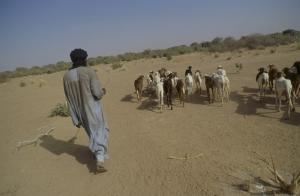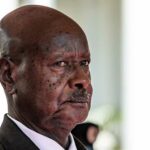No featured image set for this post.
Combating Poverty in Sub-Saharan Africa
Published on April 25, 2012 at 3:27 AM by FACE OF MALAWI
For many decades now, the countries of Sub-Saharan Africa have been consigned to the bottom of the globes rich list. Decades of economic stagnation and declining living standards have turned Sub-Saharan Africa into the world’s poorest region. (Calderon & Severin 2010). United Nations Human Development Report figures show that the per capita income ratio in Sub-Saharan Africa fell from ninth of that in OECD countries in 1960 to an eighteenth by 1998 (UNDP, 2001, p. 16). Even though there has been a small recovery since the end of the 1990s, and despite ever increasing amounts of aid from NGO’s and from developed countries, Sub-Saharan Africa has failed to show any significant improvements in the vast amount of indicators that aim to asses levels of poverty (Clegg, 2010).
Whilst there has been a huge decline in poverty levels in Latin America and Asia in the past forty years, Sub-Saharan Africa achieved a depressingly small improvement in this time (Economist 2009). Whether these failings are due to internal or external problems has long been debated by academics and policy makers (Luiz 2006). Some problems are arguably down to the area’s own failings; for example the region has been littered with kleptocratic dictatorships for many years now (Bayert et al 1999, p5). Equally, it can be argued that external factors such its colonial legacy and structural adjustment programmes have contributed to Sub-Saharan Africa’s failure to improve in poverty indicators (Adepoju 1993). This essay will argue that Sub-Saharan Africa’s failure to show significant improvements is a combination of many issues, both internal and external.
Before the issues behind the lack of improvement can be discussed, it is necessary to define the term ‘poverty’ and to explain the use of poverty indicators, which themselves are perhaps not entirely what they might seem. In a statement signed by the heads of all UN agencies, the United Nations (1998) has defined poverty as being “Fundamentally a denial of choices and opportunities, a violation of human dignity resulting in a lack of basic capacity to participate effectively in society”. The statement goes on to define the lack of capacity to participate effectively in society as being; a lack of food, healthcare, clothing and security. Indicators that measure poverty therefore range from things such infant mortality rate and HIV prevalence to GDP growth rate and the proportion of employed people living below $1 (PPP) per day.
The United Nations Millennium Development Goals for example has a total of over sixty indicators which it uses to measure poverty (UN 2010 Official list of MDG indicators). However, a lack of consistency between international organisations means that poverty indicators can be confusing and fail to represent the situation correctly (Deaton 2005).
While the UN offers all of these poverty indicators, many such as Clegg (2010) have critiqued the over reliance on economic data when seeking to conceptualize African poverty. This focus on purely economic indicators, especially from the IMF and World Bank, is argued to have contributed to Afro-Pessimism and the lack of improvement in poverty indicators since the states of Africa became independent (Clegg 2010).
The issue of relatively new sovereignty is important to note when discussing the failings of Sub-Saharan Africa. Its states have only become politically autonomous since decolonisation during the mid 20th century. Before that it had been quite literally carved up by the European colonial powers in the so called ‘scramble for Africa’ and, indeed, many of the states exist as they do today only as a direct result of colonialism (Potter et al 2008, p64). Straight lines on the map are a startling legacy of Colonialism that has undoubtedly cost Sub-Saharan Africa greatly in the years since independence. The map of African state boundaries looks very different from a map which shows nations and ethnic groups.
The Weberian definition of the state as being a “territorially based political unit with the legitimate use of force over that area” (Brown 2005, p6), is different to the nation which is a more likely to be a group bound together by a common history and culture. These straight lines on the map have lead to a huge amount of internal conflict in Sub-Saharan Africa. Of 26 conflicts in the region between 1963 and 1998, 19 were internal civil wars; as a result of ethnicity, power-sharing and factional rivalries (Luiz 2006, p633). These wars have cost Africa billions of dollars, money that could have been spent on developing healthcare, education or infrastructure. Wars have also weakened social infrastructure and frightened off foreign investment (Luiz 2006, p633). Ethnic conflict in Rwanda, Congo, Sudan as well as many others could all be blamed upon the ‘Scramble for Africa’.
The lack of democratic tradition is also a worrying legacy from the days of Empire. Colonial masters often de-colonized in a hurry leaving a power vacuum, which was often filled by the local police or military. As Fanon (1961, 29) famously noted “in the colonies it is the policeman and the soldier who are the official”. Corruption has become a major problem for the Sub-Saharan African state and the failure of democratic transitions and the failure to politically liberalize one party states has lead to batch after batch of kleptocratic elites running poverty stricken countries and boosting their income in the form of bribery, rents and thievery (Bayert et al 1999, p5). African leaders have all too often pursued their own business interests over the interest of the state, and claim patrimonial ownership over natural resources (Chabal & Daloz 1999 p7). This is part of the ‘resource curse’ that many African states endure.
The Sub-Saharan African state is then both strong and weak at the same time. It is weak for example because the rule of law for the most part is feebly enforced and the state can do little to help its people in terms of welfare, but it is strong due to the often neo-patrimonial leadership which will fight hard and suppress people to control resources (Chabal & Daloz 1999, p9). It is clear then, that lifting people out of poverty is often not the forefront of African leader’s agenda. Many, such as Mills (2010), argue that Africa is poor because it is corrupt and greedy leaders choose to keep it this way.
These rife levels of corruption undermine development; by increasing transaction costs, making aid less effective and illegitimating government actions, preventing any significant improvement in poverty indicators (Luiz 2006 p633). How can infant mortality rates drop if aid money assigned to improve healthcare is stolen by corrupt officials, and how can adult literacy rates improve when money designated to improve education befalls the same fate? This kind of behaviour would not be acceptable in the ‘Western world’ and the failure of Sub-Saharan Africa to comply with international norms and values has provided it with even more problems.
As Mbebme (2001 p2) notes there is no doubt that “Africa as an idea, a concept, has historically served, and continues to serve, as a polemical argument for the West’s desperate desire to assert its difference from the rest of the world”. Africa has always been viewed as an ‘other’ by the developed world and historically has been subject to a large amount of marginalisation in economic and socio- political institutions (Luiz 2006 p629).
This has been especially true since the end of the Cold War, as the region lost its strategic importance and often superpower backing (Chabal & Daloz 1999, p116). Some, such as Olofin (2002), argue that in this increasingly globalised and interconnected world, Africa is heavily marginalized in terms of its ability to achieve things within the international system, but at the same time it remains heavily influenced by the international economic conditions created by international institutions and powerful Western states.
The International Monetary Fund, the World Bank and the World Trade Organization are classic examples of neo-liberal institutions that control the agenda in Sub-Saharan Africa (Petras and Veltmeyer 2001, p18). These institutions are dominated by the world’s economic powerhouses who control and set the direction the institutions will take (Luiz 2006, p638). The World Bank has 182 member states. On the Executive Board which governs it, the United States has 16 per cent of votes, Japan 11 per cent, Germany 7 percent with France and the UK on 5 percent each. These countries also have individual Executive Directors on the board. This is interesting when you consider that it is Sub Saharan Africa which more often than not the recipient of IMF programmes, but yet as little say in how they are structured and implemented.
It is clear to see that this marginalisation is a problem for Sub-Saharan Africa; the region is unable to influence the discourse and often has to accept measures that are taken against it. Structural Adjustment Programmes (SAPs) implemented by the IMF, are forced upon countries that have spiralling debts, inefficient economies and are having problems servicing debts (Adepoju 1993, p2). In the 1980’s so many Sub-Saharan states were forced to undertake these programmes that the period became known as the ‘lost decade’. While some such as Lal (1983) argue that IMF structural adjustment programmes are crucial in the long term stabilisation of African economies, arguablly these programmes do very little short term good and in fact will often end in worsening results in poverty indicators. This is because a common feature of a SAP is to force economic austerity on a state and to ‘liberalize’ it.
Typical features include a reduction in public sector spending; privatizing state owned industry, shifting the terms of trade and increasing competition (Briggs & Yeboah, 2001). Although these macro-economic reforms are undoubtedly necessary in the long-term, the short term consequences can be devastating to the poorest in society. Diminished government spending, removal of price controls over food stuffs and public sector job losses all pushed more below the poverty line immediately (Crisp & Kelly, 1999). More people going in to poverty means poverty indicators will not improve, and may even get worse, no doubt entrenching afro-pessimism.
As social expenditure declined and continues to decline in Sub-Saharan Africa, the average person now has less access to healthcare, education and employment (Adepoju 1999). While the economies of Sub-Saharan Africa continue to grow in real terms, the number of those below the poverty line fails to change. This is reflected in the data. Zambia’s GDP, for example, has increased between 5 and 9 percent over the last ten years for example, but since 1993 at least 80 percent of its populations has been below the poverty line and similar figures are true of many other Sub-Saharan African states (CIA, 2011).
It is clear then that Sub-Saharan Africa has failed to see significant improvements in poverty indicators for a plethora of reasons, both internal and external. There are so many factors that have not even been covered in this essay: environmental degradation, natural disasters, HIV epidemic and so on. However, it is undeniable that Sub-Saharan Africa has been seriously disadvantaged by the arbitrary borders of imposed by empires. Wars, coups and a dubious democratic tradition are all a result of this and money that could have been spent on development and lifting people out of poverty has been lost. Poor governance, corrupt leadership and awful policy choices sent the region into a downward spiral, with increasing debts, crumbling infrastructure and an over reliance on natural resources.
A lack of investment in areas such as healthcare and education kept people in the poverty trap. Perhaps due to its inefficient nature and high levels of corruption, the region has been increasingly marginalised in the international system and levels of engagement with Africa have increased only in terms of Aid, and the Sub-Saharan Africa in particular is portrayed as a basket case.
The region has been unable to develop its economies through protectionism in the same way that South East Asia has due to the pressures of the neo-liberal consensus. Economic sanctions imposed by Bretton Woods institutions, such as the IMF’s structural adjustment programmes, are forward looking and well meaning, but do little to help those at the bottom of the social ladder.
Finally, it can be said the poverty indicators themselves are of little help to Sub-Saharan Africa. Indicators such as the Millennium Development Goals are “one-size fits all” and fail to take in to account differences between states. Problems in one state can therefore lead to afro-pessimism across the board. Less money spent on measuring poverty and more spent working to reduce it could well be the way to progress. After all, measuring poverty is not the same as alleviating it.



